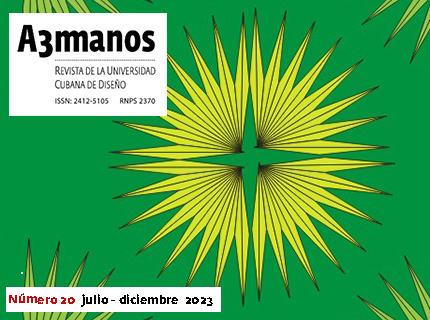The selection of materials in the design process at the Superior Institute of Design in Havana, Cuba
##plugins.themes.bootstrap3.article.main##
Abstract
The training of designers in terms of materials is generally studied from two approaches: the one related to the characteristics of the materials that impact the senses of the user, such as shape, temperature, color and texture; summarized this in the meaning of the material, whose greatest exponents are: Dr. Elvin Karana, Paul Hekkert and Prabhu Kandachar. The second field refers to manufacturing and manufacturing processes, where Dr. Asby from the Cambridge School of Engineering stands out as a world reference. This article focuses on the second. In the study programs of our institution, the matter of the selection of materials is divided into 4 categories: plastics, metals, ceramics and wood. This paper aims to address everything that must be investigated and studied by the industrial designer to face the complex but necessary task of selecting the right material for his product.
##plugins.themes.bootstrap3.article.details##

This work is licensed under a Creative Commons Attribution-NonCommercial-ShareAlike 4.0 International License.
- Attribution — You must give appropriate credit , provide a link to the license, and indicate if changes were made . You may do so in any reasonable manner, but not in any way that suggests the licensor endorses you or your use.
- NonCommercial — You may not use the material for commercial purposes .
- No additional restrictions — You may not apply legal terms or technological measures that legally restrict others from doing anything the license permits.
- ShareAlike — If you remix, transform, or build upon the material, you must distribute your contribution under the same license as the original. NOTE: This point applies to numbers 1 to 20 of the magazine with the previous CC-BY-NC-SA 4.0 license. Does not apply to the new CC BY-NC 4.0 license from Volume 11, Number. 21 (2024).
References
Ashby, M. (1992). Materials Selection in Mechanical Desing. Oxford: PergamonPress.
Ashby, M., & Shercliff, H. (2014). Materials engineering science processing and design. Oxford: Department of Engineering.
Karana, E., Hekkert, P., & Kandachar, P. (2008). Materials considerations in product design: A survey on crucial material aspects used by product designers. Materials & Design, 29(6), 1081-1089.
Karana, E., Hekkert, P., & Kandachar, P. (2010). A tool for meaning driven materials selection. Materials & Design, 31(6), 2932-2941.
Peña Martínez, S. L. (2019). Modelo para caracterizar la profesión de Diseño en el contexto social y productivo de Cuba. La Habana: ISDi.
Peña Martínez, S. (2008). Propuesta de currículo para la formació de diseñadores . La Habana: ISDi.
Pérez, M., & Peña, S. (2000). DISEÑO. El Objeto de la profesión. A3manos, 2(2), 6-26.
Toranzo Hernández, L., Barrueta Gómez, N., & Fadraga González, D. (2020). Selección de materiales en el proceso de diseño. A3manos, 46-53.

























